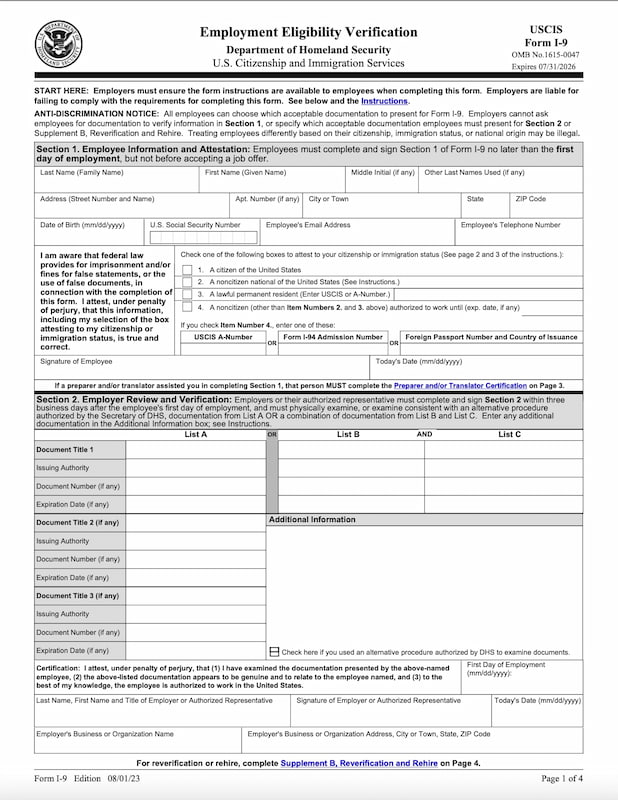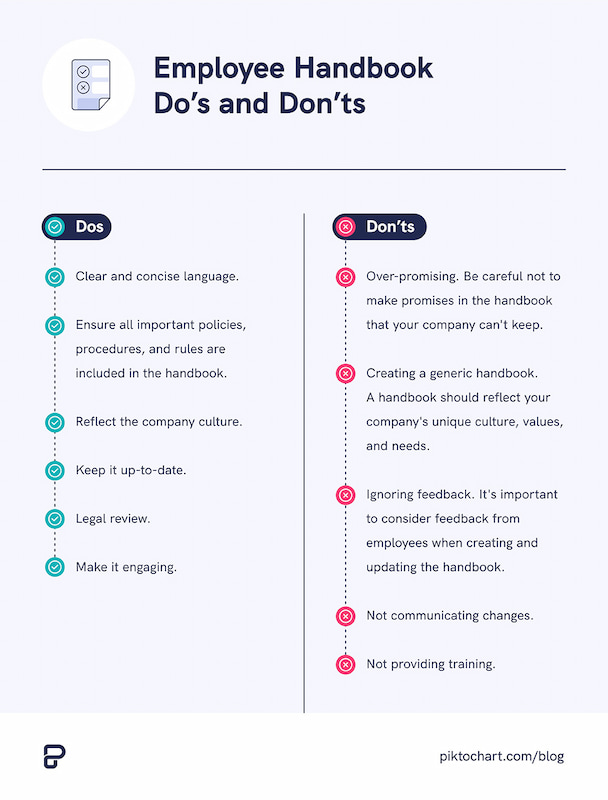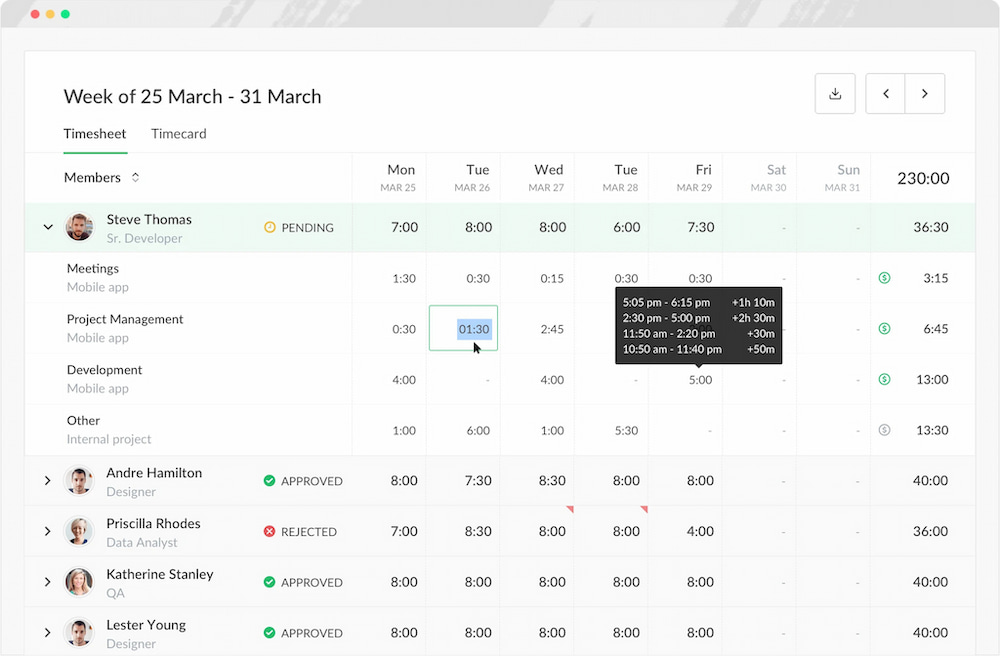Starting a new job can be both exciting and overwhelming for new employees. To ensure a smooth transition and set the stage for success, a well-organized new hire checklist is essential. This new employee checklist not only helps new hires acclimate quickly but also ensures that all necessary steps are completed, from onboarding paperwork to setting up workstations. Having a comprehensive new hire onboarding checklist streamlines the onboarding process, fosters a positive first impression, and sets the foundation for a productive working relationship. This article will guide you through the key components of an effective new hire checklist, ensuring that your new employees feel welcomed and prepared from day one.
What Is an Onboarding Checklist & Why It Matters
An onboarding or new hire checklist is a comprehensive guide designed to ensure that new hires have a smooth transition into their roles and the company culture. It helps HR and managers track the completion of essential tasks, from paperwork to training sessions, ensuring nothing is overlooked. A well-structured new employee onboarding checklist enhances employee engagement, reduces time-to-hire, accelerates productivity, and fosters a sense of belonging from day one.

Why use an onboarding checklist?
- Consistency: Ensures all new hires receive the same essential information and support.
- Efficiency: Streamlines the onboarding process, saving time and reducing the risk of errors.
- Employee experience: Creates a positive first impression, increasing retention rates.
How long should the new hire checklist be?
The length of an onboarding checklist for new hires varies depending on the company size, industry, and the complexity of the role. Typically, it should cover the first week to the first three months of employment, ensuring a comprehensive and supportive onboarding experience.
New Hire Checklist Broken by Time Periods & New Hire Checklist Examples
Pre-arrival checklist
Before the new hire even steps foot in the office, there are several critical tasks to ensure a smooth start:
- Send offer letter and contract: Ensure the new hire receives and returns their signed offer letter and employment contract.
- Complete background checks: Verify the candidate’s references, employment history, and any necessary background checks.
- Prepare IT setup: Arrange for the new hire’s email account, software access, and any necessary hardware (e.g., laptop, phone).
- Create a welcome packet: Include company policies, a welcome letter, organizational charts, and any other relevant materials.
- Assign a mentor or buddy: Pair https://apdesi.or.id/kritik/ the new hire with a mentor or peer to guide them through their initial days.
- Set up the workspace: Ensure their workspace is clean, equipped with necessary supplies, and ready for their arrival.
- Inform the team: Notify the relevant team members of the new hire’s start date and role.
- Schedule orientation and training: Plan initial orientation sessions, including an introduction to the company culture, values, and key personnel.

First-day checklist
The first day is crucial for making a positive impression and helping the new hire feel welcomed:
- Greet and introduce: Welcome the new hire, introduce them to their team, and give them a tour of the office.
- Provide ID and access cards: Hand over their ID badge, security access cards, and any other necessary credentials.
- Review the schedule: Outline the plan for the day, including meetings, training sessions, and breaks.
- Conduct HR onboarding: Complete any remaining paperwork, explain benefits, and review company policies.
- Set up workstation: Assist the new hire with setting up their computer, phone, and any necessary software.
- Begin orientation: Start the formal orientation process, covering key company information, organizational structure, and job expectations.
- Assign first tasks: Give the new hire some initial, manageable tasks to help them start contributing right away.
- Arrange a team lunch: Organize a casual lunch with the team to help the new hire build relationships.
First-week checklist
During the first week, the focus is on helping the new hire get acclimated to their role and the company:
- Review company goals and values: Ensure the new hire understands the company’s mission, vision, and strategic goals.
- Discuss job responsibilities: Go over the new hire’s specific role, responsibilities, and performance expectations.
- Provide essential training: Begin role-specific training sessions, including tools, systems, and processes.
- Arrange meetings with key stakeholders: Schedule introductions with colleagues, managers, and other important contacts.
- Encourage feedback: Regularly check in with the new hire to see how they’re settling in and address any concerns.
- Set short-term goals: Establish initial goals or projects for the new hire to focus on during their first month.
- Introduce company culture: Encourage participation in company social events, team meetings, or other cultural activities.

First-month checklist
The first month is about deepening the new hire’s integration into the team and company:
- Conduct a one-on-one review: Have a meeting with the new hire to discuss their experiences, challenges, and any questions they may have.
- Monitor progress: Track the new hire’s progress on initial tasks and provide constructive feedback.
- Expand training: Continue with more advanced training or shadowing sessions to deepen their knowledge of their role and the company.
- Foster relationship building: Encourage the new hire to have coffee or lunch with colleagues to build stronger connections.
- Evaluate onboarding process: Collect feedback from the new hire on their onboarding experience to identify areas for improvement.
- Set longer-term goals: Begin discussing and setting more extended goals and projects that align with the new hire’s development and company objectives.
- Formal check-in with mentor/buddy: Arrange a formal meeting between the new hire and their assigned mentor to discuss progress and any ongoing support needed.
These steps ensure that the new hire not only feels welcomed and supported but also becomes a productive and engaged member of the team as quickly as possible.
Legal and Compliance Checklist
Ensuring that new hires meet legal and compliance requirements is critical for protecting your organization and maintaining a smooth onboarding process. This staff onboarding checklist covers essential legal and compliance tasks that must be completed to ensure that new employees are fully compliant with regulations and organizational policies.
1️⃣ Verify eligibility to work
- Complete employment eligibility verification (I-9): Ensure the new hire provides documentation proving their eligibility to work in the country. This form must be completed within three days of the employee’s start date.
- Verify work authorization: For employees who are not citizens, confirm that their work visas or permits are valid and up-to-date.

2️⃣ Set up payroll and tax information
- Complete W-4 form: Have the employee fill out their W-4 form to determine their federal income tax withholding.
- Submit state tax forms: Ensure that any required state tax forms are completed, depending on the location of the employee and company.
3️⃣ Review and sign employment agreements
- Employment contract: Provide and review the employment contract, including terms of employment, job responsibilities, and compensation details.
- Non-disclosure agreement (NDA): Ensure that the employee signs an NDA if required, to protect confidential company information.
- Non-compete agreement: If applicable, have the employee sign a non-compete agreement to prevent them from working with competitors.
4️⃣ Health and safety compliance
- OSHA compliance: Inform the new hire about Occupational Safety and Health Administration (OSHA) regulations and company-specific safety procedures.
- Emergency procedures: Provide training on emergency procedures and ensure the employee understands their role in maintaining a safe workplace.
5️⃣ Benefits enrollment
- Health insurance: Provide information about health insurance options and help the new hire complete any necessary forms for enrollment.
- Retirement plans: Explain retirement plan options and assist with the enrollment process if applicable.
6️⃣ Company policies and procedures
- Employee handbook: Review the employee handbook with the new hire to ensure they understand company policies, including the code of conduct, anti-discrimination policies, and attendance expectations.
- Acknowledge receipt: Have the new hire sign an acknowledgment form indicating that they have received and read the employee handbook.

7️⃣ Data protection and privacy
- Data protection policies: Educate the new hire about data protection policies and procedures, especially if they will handle sensitive information.
- Access rights: Set up appropriate access rights for systems and data, ensuring that the new hire only has access to information relevant to their role.
8️⃣ Training and certification
- Compliance training: Schedule any mandatory compliance training sessions that are required by law or company policy.
- Certification requirements: Ensure that any necessary certifications or licenses are obtained or updated.
9️⃣ Record-keeping
- Document storage: Maintain a secure and organized system for storing completed forms, agreements, and records related to the new hire’s legal and compliance requirements.
- Audit trail: Ensure that there is an audit trail for all compliance-related activities, including completed paperwork and training records.
Tools for the Onboarding Process
Effective onboarding relies on a range of tools that streamline processes, enhance communication, and facilitate new hire integration. Here’s a look at some essential tools to consider:
- HR management systems: These systems manage employee data, track performance, and automate HR tasks. Examples include BambooHR and Workday.
- Onboarding software: Specialized platforms like Sapling and Zenefits help streamline the onboarding process with features like document management, task tracking, and employee training modules.
- Project management tools: Tools such as Asana and Trello help new hires understand project timelines, responsibilities, and team workflows.
- Communication platforms: Slack and Microsoft Teams are crucial for keeping new employees connected and informed, allowing for real-time communication and collaboration.
- Time tracking and reporting tools: Everhour is an excellent option for tracking work hours and project progress. It integrates seamlessly with popular project management tools, providing detailed reports and insights to ensure that new hires are on track and effectively contributing to their teams.

Using these tools effectively can make the onboarding process smoother and more engaging for new employees, setting them up for success from day one.
Common Mistakes to Avoid When Onboarding
When managing a new hire checklist, it’s crucial to use the checklist with the best onboarding practices and avoid common pitfalls that can hinder the onboarding process and affect employee integration. Here are some key mistakes to watch out for:
- Neglecting pre-arrival preparation: Failing to prepare for a new hire’s arrival can lead to confusion and frustration. Ensure all necessary equipment, access permissions, and paperwork are ready before their start date.
- Overloading employees with information: Bombarding new hires with excessive information on their first day can be overwhelming. Provide a structured, gradual introduction to their roles, responsibilities, and the company culture.
- Skipping introduction to team: Not introducing new employees to their team and key stakeholders can create a sense of isolation. Organize team meetings or informal meet-and-greets to help new hires build relationships early on.
- Inadequate training: Insufficient training or unclear expectations can lead to confusion and errors. Develop a comprehensive training plan that covers all necessary skills and processes, and provide ongoing support.
- Ignoring feedback: Failing to solicit feedback from new hires about their onboarding experience can prevent you from identifying and addressing potential issues. Regularly check in with new employees to gather their insights and make improvements.
- Lack of follow-up: Not following up with new hires after the initial onboarding period can lead to disengagement. Schedule regular check-ins to assess their progress, address any concerns, and provide additional support as needed.
- Using ineffective tools: Utilizing outdated or inadequate tools can hinder the onboarding process. Ensure you use up-to-date and effective tools, such as Everhour for tracking time and progress, to facilitate a smooth integration process.
FAQ: New Hire Checklist
What is an onboarding checklist, and why is it important?
An onboarding new employees checklist is a structured list of tasks and activities designed to integrate new employees into an organization effectively. It is crucial to ensure that new hires receive the necessary information, resources, and support to start their roles smoothly. This checklist typically includes pre-arrival preparation, first-day activities, and ongoing support tasks to help new employees acclimate quickly and efficiently.
How long should an onboarding process last?
The duration of an onboarding process can vary depending on the company and the role. Generally, a comprehensive onboarding process spans from the pre-arrival stage through the first month of employment. An effective onboarding checklist should include activities for each stage—pre-arrival, first day, first week, and first month—to ensure that new hires are well-integrated and supported throughout their initial period.
What should be included in an HR onboarding checklist?
An HR onboarding checklist should cover a range of tasks, including administrative paperwork, introduction to company policies and culture, and initial training. Key elements might include setting up workstations, providing access to necessary tools and systems, and ensuring legal and compliance requirements are met. Including all these components helps ensure a smooth transition for new hires.
How can technology improve the onboarding process?
Using technology can significantly enhance the onboarding process. Tools like Everhour help track the progress of new hires, streamline administrative tasks, and improve communication. Effective use of technology can facilitate a more organized and efficient onboarding experience, making it easier to manage and support new employees as they settle into their roles.
What are common elements in an onboarding list for new hires?
Common elements in a new employee onboarding checklist include tasks related to preparation before arrival, activities for the first day, and ongoing support for the first week and month. This checklist should also cover legal and compliance aspects to ensure that all necessary documentation and training are completed. Each stage of the checklist should be tailored to address the specific needs of the role and the new hire.
New Hire Checklist: Conclusion
A well-structured new hire checklist is crucial for a seamless onboarding process and sets the stage for long-term success. By meticulously covering each stage—pre-arrival, first day, first week, and first month—you ensure that new employees are equipped with the tools, knowledge, and support they need to thrive in their new roles.
To streamline and enhance your onboarding process, consider using tools like Everhour. With its time-tracking capabilities and integration with popular project management software, Everhour can help manage and monitor onboarding tasks efficiently, ensuring that every step of the onboarding new employees checklist is completed effectively. By leveraging such technology, you can provide a more organized and supportive experience for your new hires, setting them up for success from day one.
If you are managing a team of 5 or more and looking to boost efficiency, Everhour is the perfect tool to keep your team on track. With seamless time tracking, you can easily estimate task durations, set clear budgets, and generate detailed reports inside Asana, Trello, Jira, or any other pm tool.

